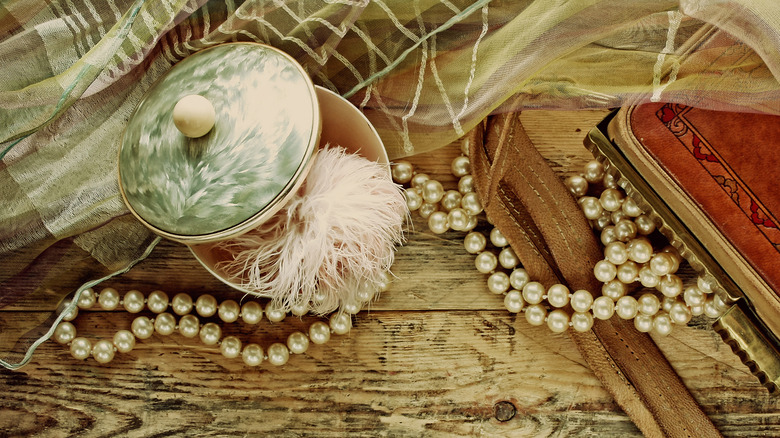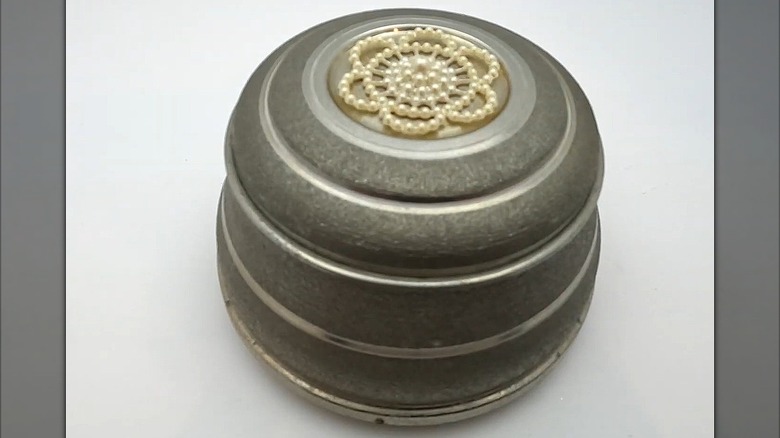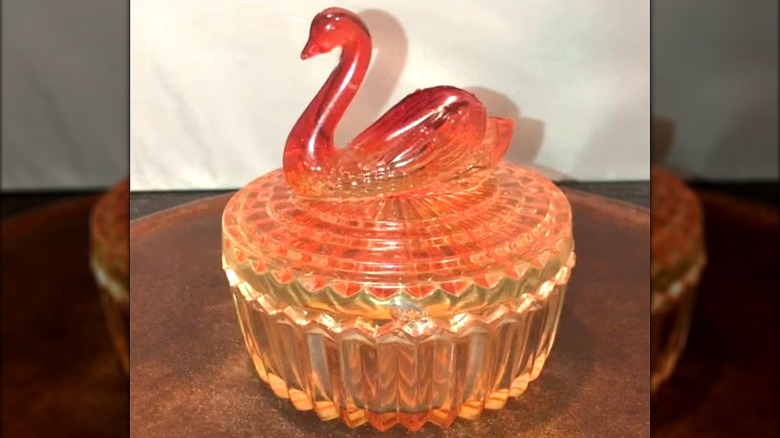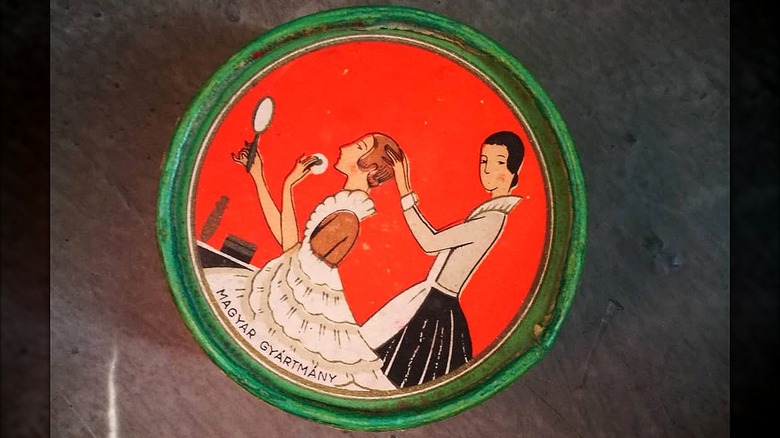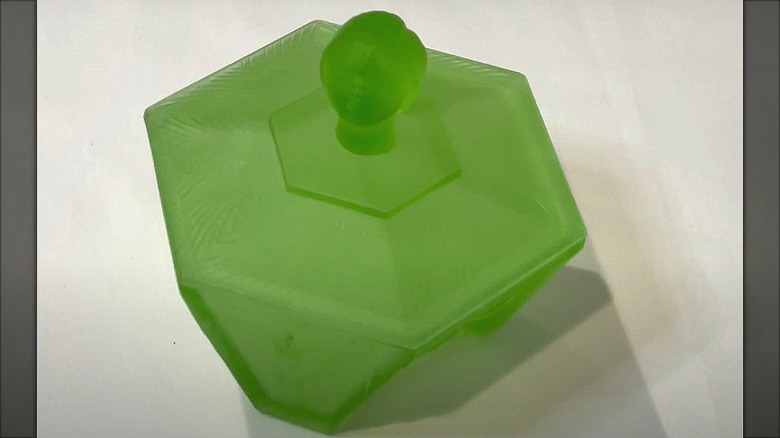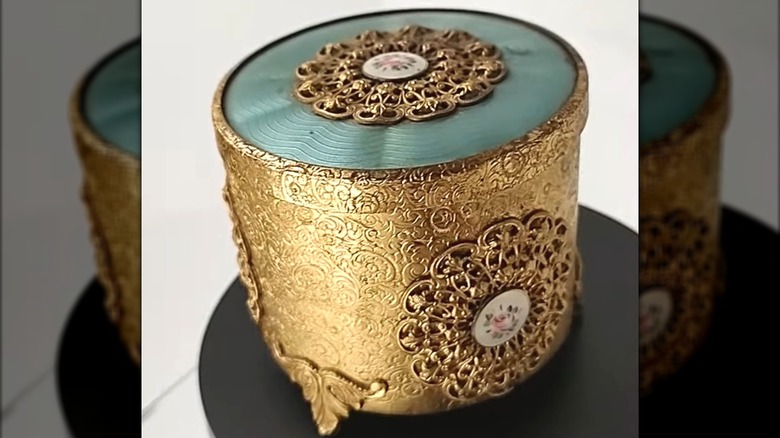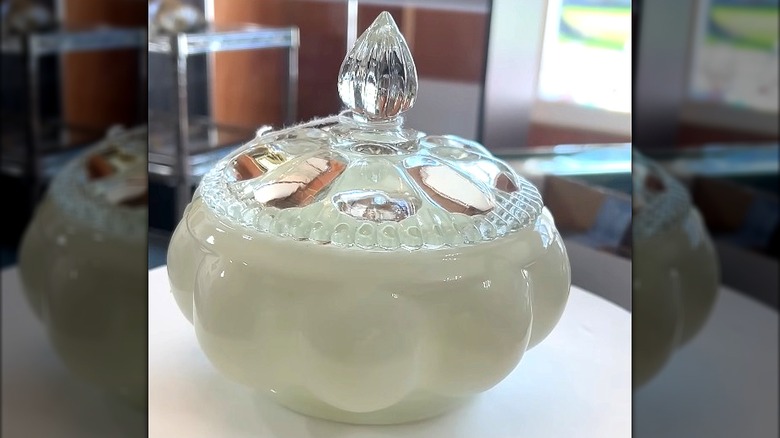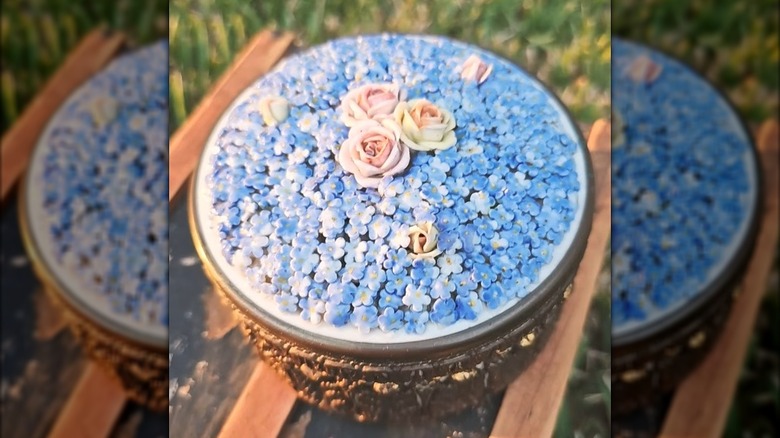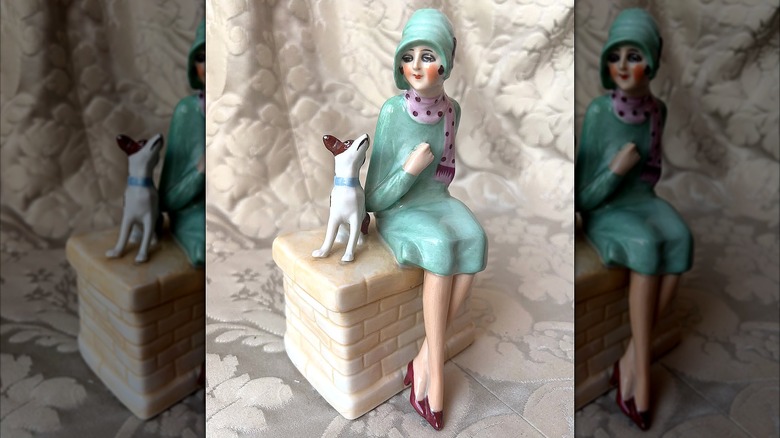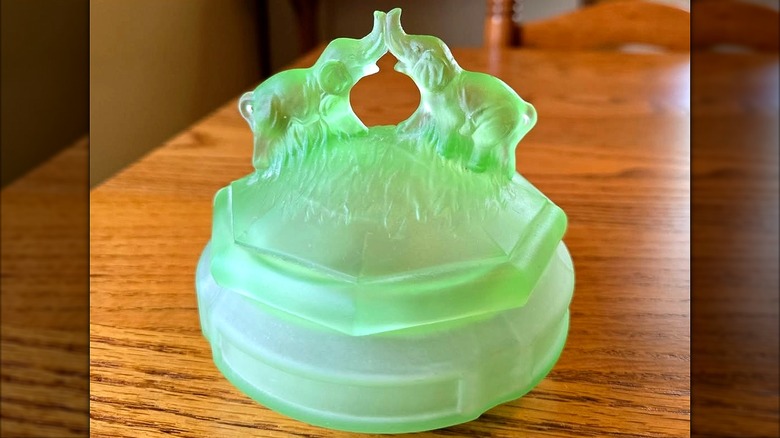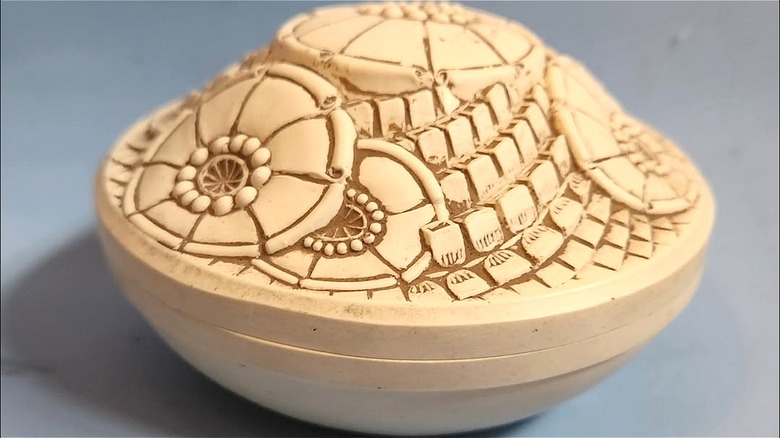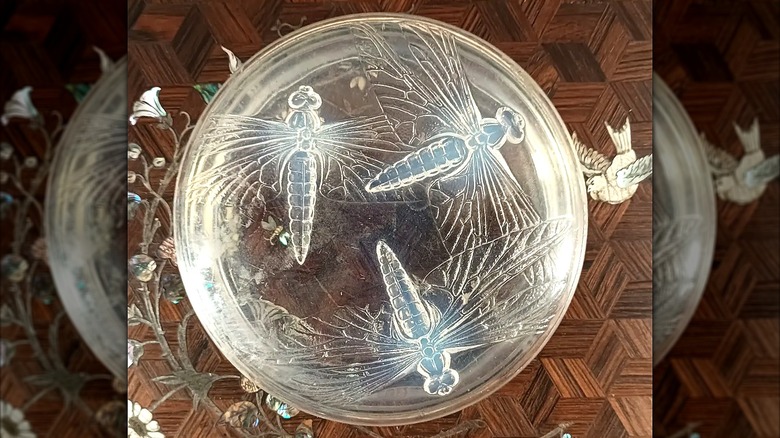12 Vintage Powder Jars That Are Always Worth Grabbing At The Thrift Store
If you browse through the makeup community of TikTok, YouTube, or Instagram long enough, you'll eventually stumble upon the wonderful world of vintage beauty collectors. Cosmetic packaging is one of the treasured antique items that are dominating 2025 thrifting trends, as consumers look for alternatives to today's mass-produced, low-quality industry standards.
They're drawn to the intricate details, the thoughtful, practical designs, and the rich history of pieces such as lipsticks, perfume bottles, and powder jars, some of which still contain their original contents. Naturally, the actual makeup is no longer usable, be it because of its age or the presence of ingredients that were later found to be toxic, such as radium. However, since most of these containers were conceived to be refilled, they can make charming, unique additions to a beauty room for the makeup lover in your home.
Powder jars, also known as vanity or trinket jars, were a staple of the Victorian and early 20th-century dressing table, complete with fluffy powder puffs made from natural fibers. Used in moderation, powder was one of the principal makeup products of the time, first to hide blemishes and later to soak up excess oil. Some of the most exquisite examples of these boxes were made from painted porcelain or textured metal and glass, their lids decorated with small paintings, jewels, or sculptural finials in the shape of animals and flapper girls. This passionate attention to detail, even for something as simple as a powder jar, is what sets such vintage finds apart, turning them into precious collectibles.
12. Japanese Geishaware powder jars
Geishaware, also known as Geisha Girl Porcelain, is a popular and affordable collectible. These pieces, featuring traditional female Japanese entertainers in colorful kimonos hanging around temples and pagodas, were mass-produced between the 19th century and the 1950s with the Western market in mind, making them relatively inexpensive antiques to buy today. Online, you can find Geishaware powder jars for a little under $20. Still, the reduced price doesn't minimize their vintage charm, which is entirely tied to the imperfect, blotchy enamel painting style.
11. Aluminum powder puff music boxes
First invented in Switzerland, music boxes became incredibly popular throughout Europe in the 19th century. After the Second World War, they made their way to the United States, where the technology was applied to various products, including powder boxes. The most common were produced in aluminum and were round-shaped, with an ornamented removable lid. If preserved, these unique models have a winding key on the bottom and play music when the lid is removed, revealing a cavity to store powder and a puff. They're worth around $20 on eBay.
10. Jeannette glass powder jars
Jeannette Glass Co. was one of the most prolific manufacturers of infamous depression glassware. This affordable pressed glassware was mass-produced in the 1920s and 1930s to reach financially struggling American families after the Great Crash. It's since become a historical relic and a popular collectible. This brand's powder jars come in all shapes and forms, but its most distinctive models feature animal finials, such as swans, poodles, elephants, and deer. They're clear or tinted and generally sell for a little over $20.
9. Richard Hudnut Three Flowers powder boxes
Richard Hudnut was a famous perfumer in the early 20th Century, eventually expanding the brand to include makeup products such as face powders. This entry is a little different from others on this list, as it is not a powder jar but the packaging in which the Three Flowers line of Hudnut powder was sold. Either made from paper or metal, it always featured the same Art Deco-style design of a lady applying face powder while a housemaid fixed her hair. An example in perfect condition can sell for over $30 on eBay.
8. Ramses satin glass powder jars
Short-lived French cosmetics company Ramses had a tumultuous history about which there is little properly reviewed information; however, one thing is certain: its powder jars are beloved antiques. The satin glass, hexagon-shaped pieces, with an Art Deco girl finial and other embossed patterns on each side, in green or pink, can be worth upward of $70. Meanwhile, similar models with larger Crinoline girl-shaped lids are listed on eBay for as much as $274.
7. Thorens gold filigree & guilloche musical powder boxes
The name Thorens is probably best associated with record players, but this pioneering audio technology company from Switzerland began by making music boxes in the late 19th century. This beautiful gold filigree and guilloche model is a more valuable example of the musical powder boxes mentioned earlier. If you come across one of these in the wild, check the bottom for a mark that reads "Thorens — Distributed by Silverite Co. — Brooklyn 16, N.Y." Its metallic top also comes in pink and can be worth nearly $100.
6. Fenton Art Glass powder jars
Fenton Art Glass Company was a leading glassware manufacturer for over 100 years before production halted in 2011. Though the brand lives on through a single gift shop in Williamstown, Ohio, it's its vintage pieces, such as its melon-shaped powder jars, that truly excite collectors. You can find them in multiple patterns in antique shops, both online and offline, from white, pink, green, and blue tints, to hand-painted flower decorations. These pieces were handmade in the U.S. and can sell for as much as $150.
5. German Elfinware powder jars
A beautiful, ormalu and flower-covered Elfinware dresser box, like the one shown above, can sell for nearly $500 on eBay. Although they were originally made in early 20th-century Germany to sell in gift and souvenir shops, and later imported into the U.S., they're valued for the awe-inspiring craftsmanship of their handmade porcelain decorations. The blue forget-me-nots and pastel roses were common motifs, as were moss-like details, also known as spinach. The style was an extension of the famous Rococo Dresden ceramics.
4. Flapper Girl powder jars
Flapper girl porcelain, also known as Art Deco doll or half-doll porcelain, was a popular design style in post-World War I Europe, particularly in Germany and France. These figurines, sometimes portrayed without legs, were primarily decorative but also cleverly functional. Powder jars were among the most common applications, right next to pin cushions and, even more inventive, crumb brushes. Though the designs are endless, the ladies portrayed always wear the typical hair and fashion of the time. Common manufacturers include Fasold & Stauch and Dressel & Kister.
3. L.E. Smith powder jars
Like Jeannette Glass, L.E. Smith is also a glassware company hailing from Jeannette, Pennsylvania. They both worked with depression, carnival and uranium glass in a slew of colors, only L.E. Smith's powder jars are more commonly found in a satin finish, while its competitor preferred clear. Among the most coveted examples are the fighting/kissing elephants jars, the twins jar featuring two women seating with their backs to each other, and the lady with dogs jar. These are often sold for over $100, especially when made from uranium glass.
2. Lalique Eduard Fornells powder jars
Antique René Lalique ware is valuable in and of itself, but the results of the famous glass art manufacturer's collaboration with Andorran designer Eduard Fornells Marco are museum-worthy. There are several models of powder jars, dating back to the 1910s, 1920s, and 1930s, made from plastic and usually carved or adorned with nature-inspired patterns, such as flowers, plants, fruits, and animals. They're very rare and can be worth hundreds, if not thousands, of dollars.
1. Lalique opalescent glass 'Libellules' box
On the topic of vintage Lalique glass, one of the most valuable powder jars you may come across at an antique shop or auction is the French glass art manufacturer's 'Libellules' (French for dragonflies) box. This model is listed for over $4,000 on 1stDibs, thanks not only to the prestige of its maker but also the beauty of its dreamy, milky, opalescent glass, which reflects light beautifully and brings the dragonfly pattern to life. Similar models decorated with dandelions or dahlias are just as precious.
